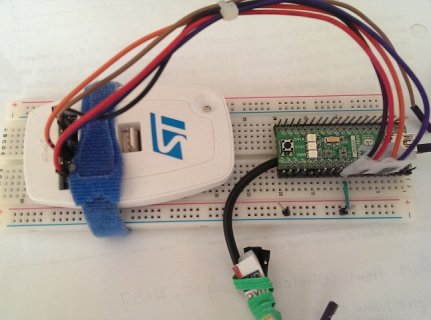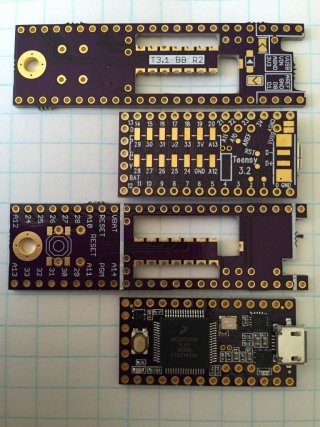I just received 12 of HWGuy's brilliant boards from OSH Park. His R2 version has an enlarged cut out for the crystal, and is a great looking board layout.
The only slight gotcha is that I also ordered a bunch of new Teensy's at the same time, which due to the change-over arrived as the new 3.2's... well Paul shifted the "rst" pad slightly, and HWGuy had cleverly aligned one of his "mouse holes" to land on the old rst pad location. I'll figure out some way to fix it with a piece of foil soldered between the boards, until HWGuy revs to R3.

Although this thread has gone all over the place, this board is a brilliant solution for people who want easy access to all the pins, in a breadboard-friendly layout, with a drop-dead simple solution to the soldering on the bottom pads.
Kudos and thanks to HWGuy for doing the design and sharing it out on OSH Park. And thanks to iwanders for the original inspiration too.
--Jon
P.S. If anyone can find a decent part number for Digi-Key, Mouser, Newark, etc. for the long centered header pins to join the boards, I'd appreciate it. The "extra long headers" from
Adafruit and the "long centered" from
Sparkfun are the right style, I just haven't been able to find a domestic supplier part number yet.
View attachment 5112



